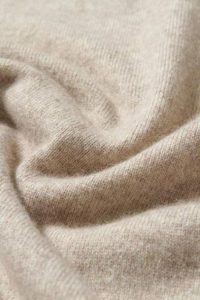A key element to getting a chic and classy look is undoubtedly the choice of yarns and textiles.
In the past, fabrics not only represented one of the most fundamental aspects of style, but they made unmistakably clear the differences between the wealthiest classes—who could afford soft, precious, and refined textiles—and the poor classes, who instead could only afford cheap and less comfortable fabrics.
Nowadays, when talking about luxury materials, one of the most acknowledged ones is cashmere, that is considered the high-class textile par excellence, due to the appeal of this undeniably soft fabric.
.
However, as you may easily come across low-quality articles, be aware that when shopping for new items your choice must always be a careful one. It’s not always a matter of price: you may find (moderately) cheap garments made with impeccable blends, as well as come across poor quality but high-priced cashmere items.
Furthermore, consider that this blend requires proper maintenance.
As we also encountered in another post, a foolproof trick is to gently stretch the body of the sweater to test if it snaps back and to pick out items with a thicker knit (which means there is more cashmere in them).
Afterward, once you’ve made your choice and are the happy owner of a lovely cashmere sweater, a crucial question arises: how can I maintain its luxurious-looking appearance?
.
Pilling is normal for cashmere (this is due to the fact that its hair is shorter than, for instance, merino), and for this reason, your cashmere garments require appropriate care, otherwise they will look dated and frumpy in a go.
Here we’ll explain step by step how to take care of your knits and make them look even more luxurious and comfortable even after many washing.
The first thing to say – contrarily to the common opinion – is that a cashmere sweater not only may be hand washed, but it requires it (this is not always the case, though, with scarves and other cashmere accessories, which may have gone under industrial processing to make them waterproof).
.
You just need to do it in the correct way, so simply follow the following instructions, and the result will be impeccable:
- Fill the sink with warm water (not hot, nor cold) and add some delicate soap.
- Place the sweater within the water, gently moving it.
- Leave the sweater in the water for about 20-30 minutes, then gently rub the dirtier parts to remove any dirt; pay attention to be very delicate, otherwise the fabric can lose its shape.
- Empty the sink and gently press the knit to remove the water. Never wring it, as a wet knit can easily stretch out when.
- To remove any excess of water, lay the knit over a big towel, then wrap the towel over itself; repeat with another dry towel if necessary, then wait until the sweater is almost dry.
- Here we come to the most important part of the maintenance process: take a hard brush (as the one below), and brush all the surface of your sweater. Not only you will remove pilling, but this will make air enter inside the knit, making it much softer.
.
No ironing needed! If you carefully followed the above instruction, you’ll have a ready-to-wear garment (if it’s still humid, you can lay it flat until it’s perfectly dry).
This will require some time, but you will get extraordinary results (and you won’t have to pay for expensive and unhealthy dry cleaning).
.
You can apply the same process to other sweaters that lost their pristine aspect, even if they’re not cashmere.
And if after reading this post, you realize that high-maintenance fabrics are “too much” for you? Not too bad: you can go for an excellent lambswool, merino, or mixed wool-silk blends, which are easier to deal with (merino sweater doesn’t pill and doesn’t lose its shape even after endless washings). This will guarantee an outstanding and stylish outcome even with a less precious blend. Good for your time, and for your style as well!
.






